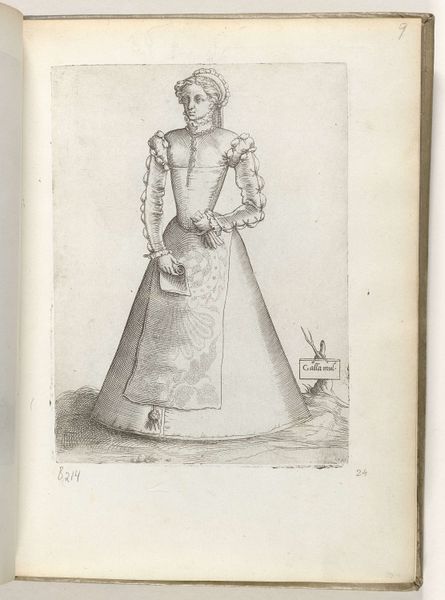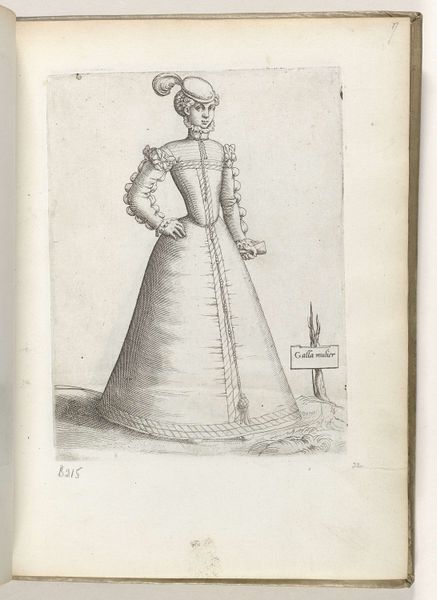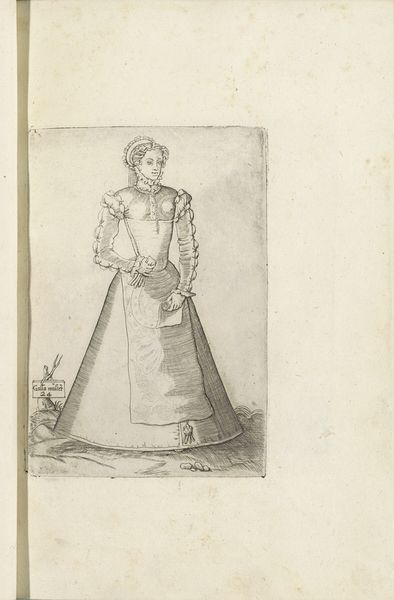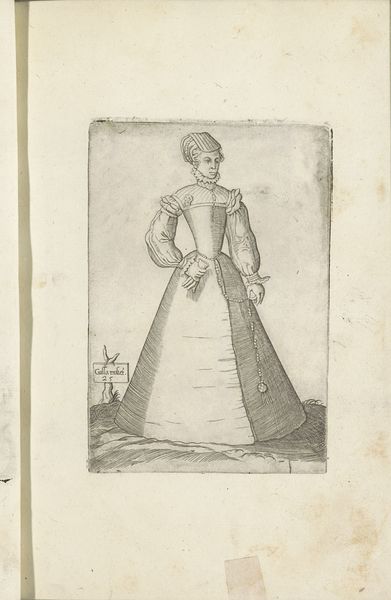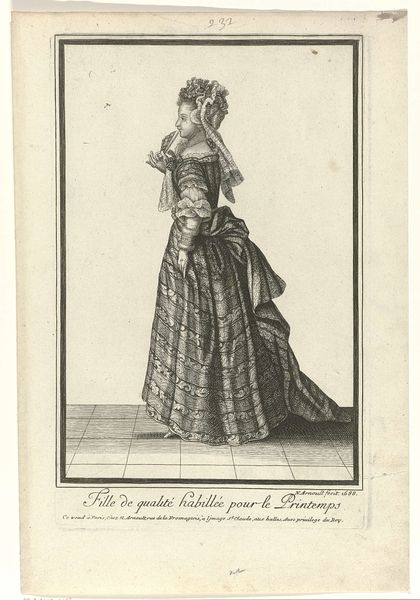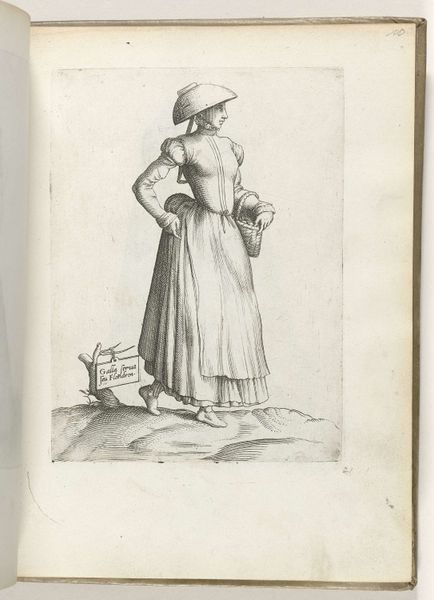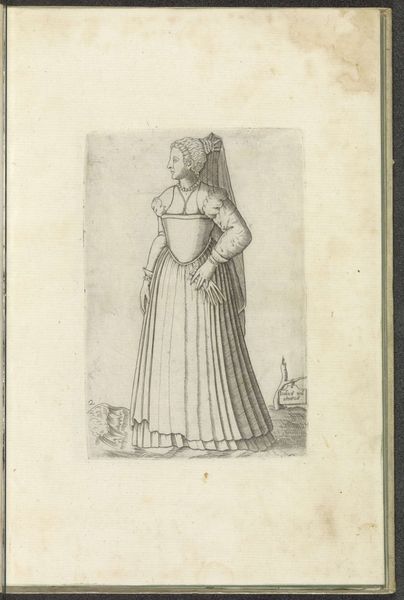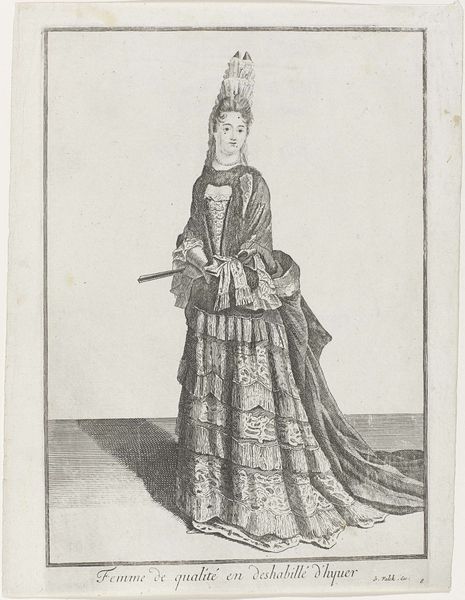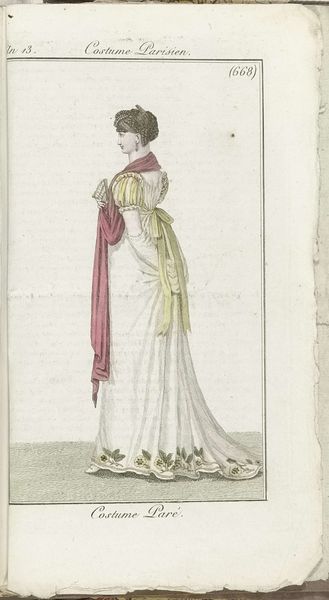
engraving
#
portrait
#
mannerism
#
figuration
#
11_renaissance
#
engraving
Dimensions: height 150 mm, width 92 mm
Copyright: Rijks Museum: Open Domain
Editor: Here we have "Galla mulier", an engraving by Enea Vico from before 1558, currently housed in the Rijksmuseum. The figure's elongated form and elaborate dress strike me as quite elegant, almost imposing. How do you interpret this work? Curator: Indeed. This piece, like many Mannerist portraits, reflects very specific socio-political contexts. Notice how the subject's dress, particularly the farthingale that gives her skirt its conical shape, rigidly constructs her body. How does that visual constriction speak to you? Editor: It feels like a deliberate restriction, a sort of… confinement? Curator: Precisely. And who benefits from that confinement? Consider the power structures at play in the 16th century: gender roles, aristocratic display, the burgeoning mercantile class eager to emulate the elite. The very term "Galla mulier" – elegant woman – speaks to enforced ideals of femininity. Is there any resistance? Look at her gaze, is it inviting or confrontational? Editor: Hmm, confrontational. Her gaze feels very direct, almost challenging. Perhaps there's a subtle tension between the constraints of her attire and her own agency. Curator: Exactly! These tensions are where we find meaning. Vico, perhaps unconsciously, reveals a struggle between imposed identity and individual expression within this "elegant woman." What are your closing thoughts? Editor: I hadn't considered how much social commentary could be embedded in what seems like a simple portrait. I'll never look at historical portraits the same way again. Curator: Nor should you! Every artwork is a conversation, an argument even, waiting to be deciphered.
Comments
No comments
Be the first to comment and join the conversation on the ultimate creative platform.

